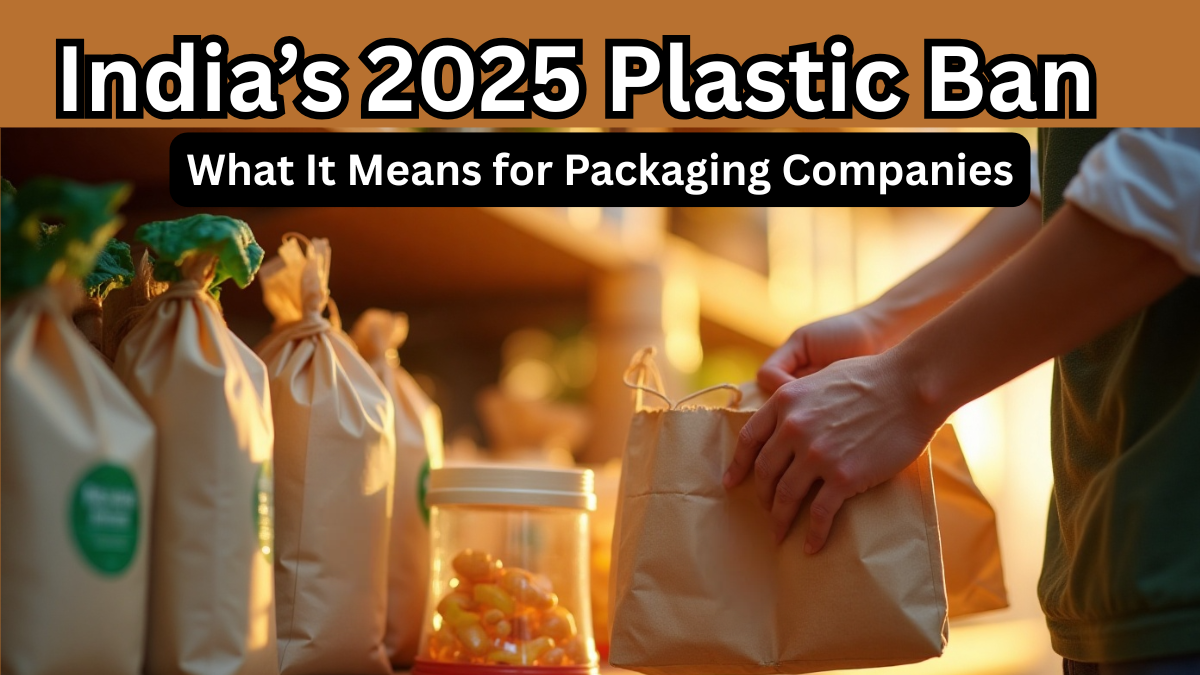India is taking a bold step towards sustainability with the upcoming Plastic Ban 2025 India. The government’s initiative aims to significantly reduce single-use plastics, impacting both consumers and industries. Packaging companies, in particular, will need to adapt quickly to align with the new regulations. Let’s break down what this means for the industry and how companies can prepare for the transition.

What is the Plastic Ban 2025 India?
The Plastic Ban 2025 India is a government-driven effort to eliminate specific categories of single-use plastics across the country. Key objectives include:
-
Reducing environmental pollution caused by plastic waste
-
Encouraging the use of eco-friendly and biodegradable alternatives
-
Promoting sustainable practices in manufacturing and packaging
The ban targets a variety of commonly used items, including plastic carry bags, straws, disposable cutlery, and certain packaging materials.
Industry Impact: How Packaging Companies Will Be Affected
The industry impact of this plastic ban is substantial. Packaging companies will face challenges and opportunities alike:
| Impact Area | Details |
|---|---|
| Material Sourcing | Need to shift from conventional plastics to biodegradable or recycled materials. |
| Cost Implications | Initial investment in alternative materials may increase production costs. |
| Product Design | Redesign packaging solutions to meet compliance standards. |
| Supply Chain Adjustments | Collaborate with suppliers of eco-friendly materials and new logistics partners. |
| Consumer Perception | Eco-friendly packaging can boost brand image and attract sustainability-conscious customers. |
Companies that proactively adapt can turn compliance into a competitive advantage, while those resistant to change risk penalties and loss of market share.
Strategies for Packaging Companies to Adapt
To navigate the Plastic Ban 2025 India, packaging companies should consider:
-
Innovating Materials: Use biodegradable, compostable, or recycled alternatives
-
Redesigning Products: Develop packaging that reduces plastic usage without compromising quality
-
Educating Customers: Communicate sustainability initiatives to create brand loyalty
-
Collaborating with Startups: Partner with eco-friendly material providers for innovative solutions
Opportunities for Growth in a Plastic-Free Market
While the ban poses challenges, it also opens up new avenues for growth:
-
Green Packaging Market: Surge in demand for eco-friendly solutions can lead to increased revenue
-
Brand Differentiation: Companies adopting sustainable practices early can stand out in the market
-
Export Potential: Meeting global sustainability standards can enhance export opportunities
FAQs about India’s Plastic Ban 2025
1. Which items are banned under the Plastic Ban 2025 India?
Single-use plastics like carry bags, straws, disposable cutlery, certain packaging films, and plastic wrappers are targeted by the ban.
2. How will the ban affect packaging costs?
Initially, costs may rise due to the shift to eco-friendly materials, but long-term savings and brand value can offset these expenses.
3. Can companies use recycled plastics?
Yes, the government encourages the use of recycled or biodegradable alternatives as part of the compliance measures.
4. How should packaging companies prepare for the ban?
Companies should innovate with sustainable materials, redesign products, educate consumers, and collaborate with eco-friendly suppliers.
Click here to learn more
